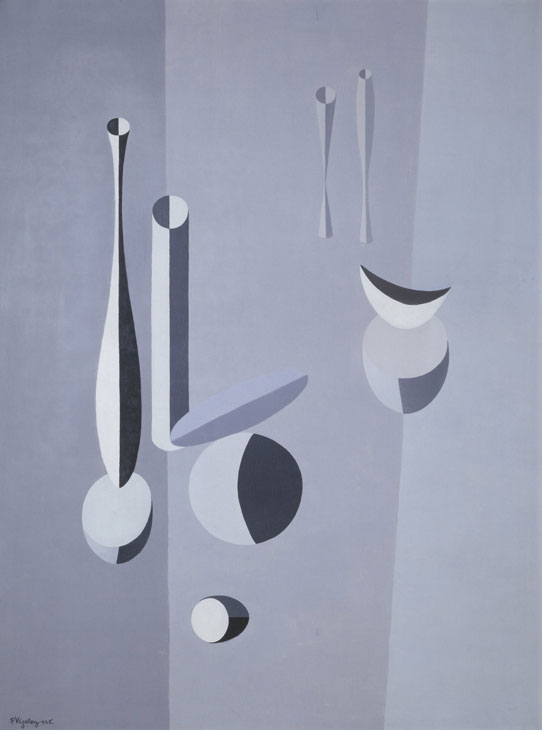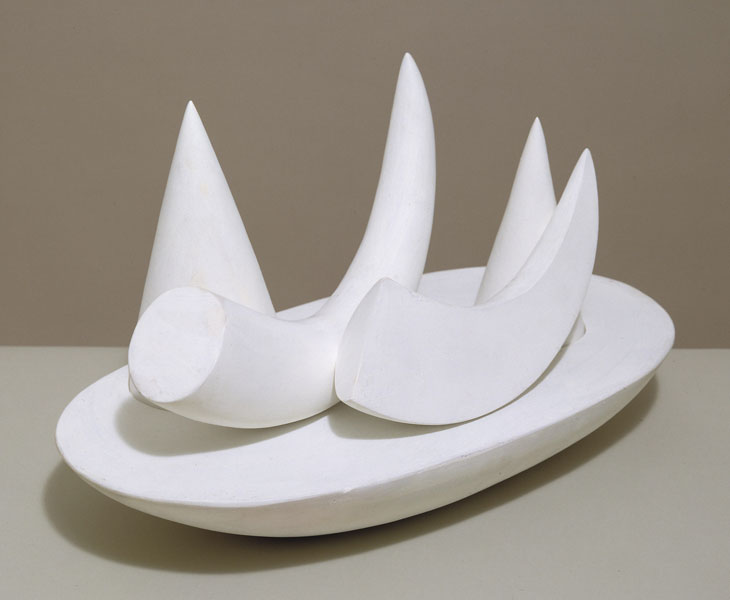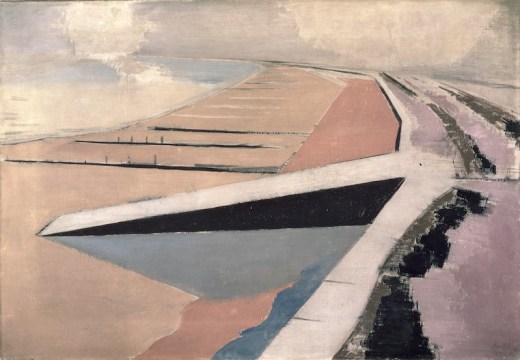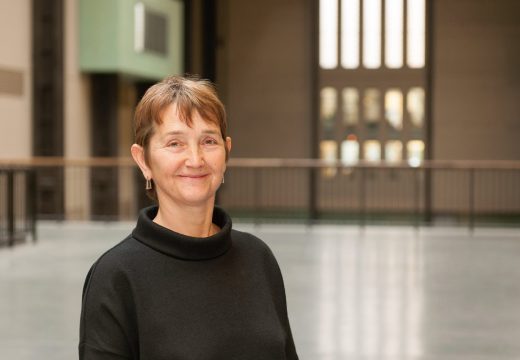In an interview for the BBC programme ‘Women of Our Century’, first broadcast in 1984, Germaine Greer quizzes artist Paule Vézelay on the reasons behind her name change. Vézelay, born Marjorie Watson Williams, chose a more androgynous and French-sounding name to mark her entry into Parisian abstraction – or so Greer assumes. The artist, however, is adamant. ‘I’ve never pretended to be a man,’ she replies. ‘I didn’t do it deliberately to avoid the question of sex. I put Paul with an ‘e’ on the end to hint that it was a feminine Paul.’
It’s an obfuscating response, perhaps, but one that’s typical of an artist who navigated the inconsistencies of fame throughout her career. Since a retrospective at the Tate Gallery in 1983, Vézelay has been all but forgotten. Now, a spotlight exhibition at Tate Britain seeks to show her centrality in the genealogy of modern art.
Vézelay, born in Bristol, moved to Paris in 1926, signalling her abandonment of figuration and the beginning of her lifelong commitment to abstraction. Early paintings show this transition in process. In The Sunbathers (1929), her developing curving line suggests female bodies bathing in a pool of yellow sunlight, while Walking in the Wind (1930) mimics the style of her partner, André Masson (whom she refused to marry on account of his violence), with its beak-like figures, angularity, and agitated line. Her admission into Abstraction–Création in 1934 confirmed her acceptance into the international avant-garde; while mixing with artists including Hans Arp, Joan Miró, and Wassily Kandinsky, Vézelay continued to develop her unique approach to surrealist abstraction.

Forms on Grey (1935), Paule Vézelay. © The estate of Paule Vézelay
The exhibition charts Vézelay’s interest in what she called ‘living lines’. In paint, these lines are depicted as free-floating curvilinear shapes emerging from white backgrounds, as in Forms on Grey (1935), and Enchanting Silhouettes (1938–41). While they suggest the female body, they are playfully ambiguous, drawing, too, on images of plant life, weather, and landscape. She also experimented with three-dimensional forms through the creation of mixed media constructions. Five Forms (1935), rendered in white plaster, reveals her interest in modernist sculpture, with its four tusk-like shapes curving upwards from a flat ovoid base. In Garden (1935), two hollowed plaster forms play host to an arrangement of shells, starfish and seaweed. The inclusion of organic matter illustrates her view of art as ‘the essence of life, concentrated, preserved, and having a rare and precious flavour’.
Vézelay returned to England at the outbreak of the Second World War, and would never again achieve the recognition of her Paris heyday. A tonal change is detectable in her paintings. Portrait of a Line (1944), for example, shows her continued refinement of linear shapes, yet is set against a background of storm clouds, their darkness and turbulence evoking a sombre mood.
By 1955, in a bid to support herself financially, she began to produce textiles for Heals of London, and designs for the scarf brand Ascher. In textiles, Vézelay’s work found a new lease of life, her organic motifs and experiments with cut-outs well suited to production in repeat. Archival material illuminates these collaborations (particularly her wonderfully detailed ink sketches submitted to Heals), yet the display makes little of the fabrics themselves, hanging a rather poor selection of the work for which Vézelay is rightfully well known.
In 1936, Paul Nash (Vézelay’s longtime friend), wrote that she had ‘contributed steadily to the modern movement’. Vézelay might finally be getting the recognition she’s due, both for her role as a female artist representing Britain in the European avant-garde, and for her insistent refinement of abstract forms across a variety of media.
‘Paule Vézelay’ is at Tate Britain, London, until 5 November 2017.
Unlimited access from just $16 every 3 months
Subscribe to get unlimited and exclusive access to the top art stories, interviews and exhibition reviews.














![Masterpiece [Re]discovery 2022. Photo: Ben Fisher Photography, courtesy of Masterpiece London](http://www.apollo-magazine.com/wp-content/uploads/2022/07/MPL2022_4263.jpg)
Why are fathers so absent from art history?